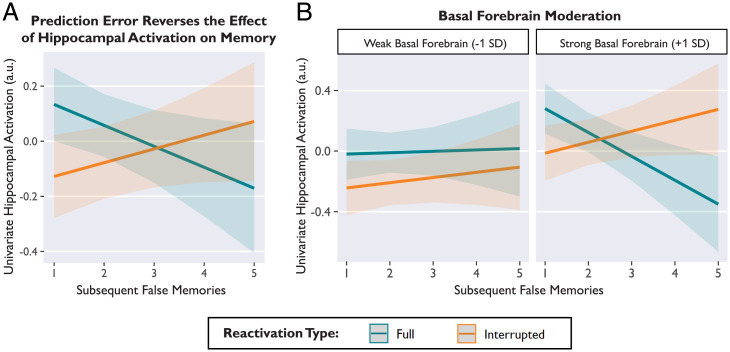Fig. 3.
Prediction error reversed the relationship between average hippocampal activation (arbitrary units, a.u.) and subsequent memory, and this effect depended on concurrent basal forebrain activation. (A) After Full videos, hippocampal activation was associated with memory preservation, predicting fewer false memories (blue). After Interrupted videos, hippocampal activation was associated with memory updating, predicting more false memories (orange). (B) The effect of prediction error on hippocampal activation and memory was observed only when basal forebrain activation was strong (Right). When basal forebrain activation was weak, hippocampal activation was unrelated to memory (Left). Basal forebrain activation is binned (weak vs. strong) for visualization, but statistical models used a continuous variable. Lines depict model-predicted estimates, and shaded bands depict the 95% CI. Model-derived estimates are shown instead of individual data points in order to show within-subjects effects, while controlling for subject and stimulus variance.

